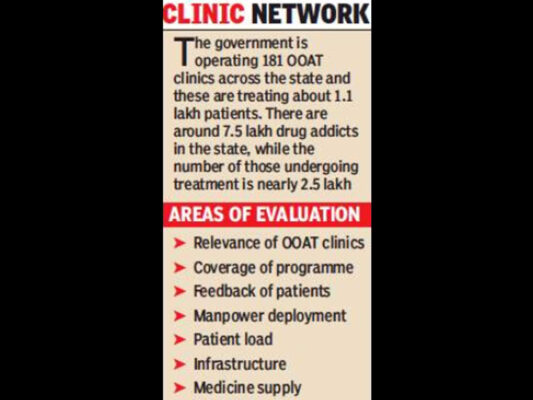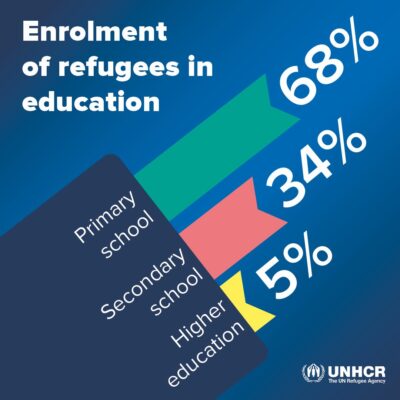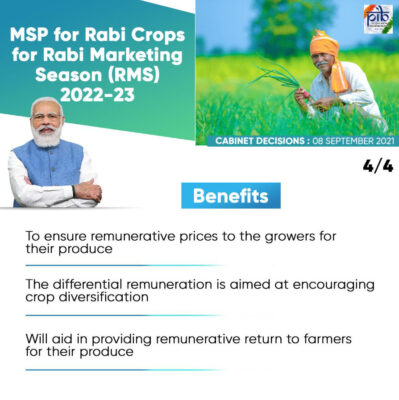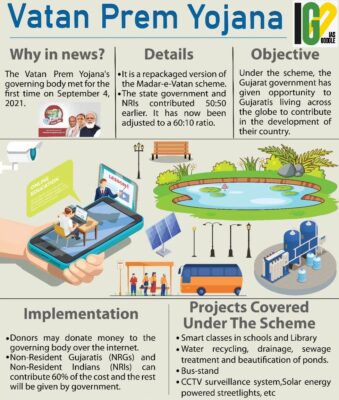- Home
- Prelims
- Mains
- Current Affairs
- Study Materials
- Test Series
13th Sep 2021
OPERATION RED FLAG: TO PLAY OUT SOON IN PUNJAB, A 100-DAY WAR ON DRUG MENACE
The Chief Minister of Punjab has decided to launch a 100-day Big Bang programme to check the problem of drugs in the state.







- The outreach of Outpatient Opioid Assisted Treatment (OOAT) centres in rural areas would be enhanced by opening extension centres and clinics.

- OOAT centres administer de-addiction medicine, a combination of buprenorphine and naloxone, to the opioid dependent people registering there.
- It is administered in the form of a pill and treatment is primarily for addicts of opioid drugs, including heroin, poppy husk and opium.
- OOAT centres in Punjab were first set in October 2017.
- There are currently 202 government-run OOAT centres, including 11 in jails, where medicine is given free of cost.
- In addition, there are 54 government and 224 private de-addiction and rehabilitation centres.
- In all these centres, there are over 7 lakh patients registered for treatment at present.
- The state government is set to open as many as 300 OOAT-linked extension centres/clinics in rural areas to broaden the outreach of this treatment.
- It will also reduce pressure on existing OOAT centres and provide medicine to patients nearer to place of residence.
- Narcotic Drugs and Psychotropic Substances Act 1985: Prohibits a person from producing, possessing, selling, purchasing, transporting, storing, and/or consuming any narcotic drug or psychotropic substance. The Act was amended thrice – in 1988, 2001 and 2014.
- Narco-Coordination Centre: Constituted in November 2016 and the scheme of Financial Assistance to States for Narcotics Control was revived.
- Project Sunrise: To tackle rising HIV prevalence in North-Eastern India, especially among people injecting drugs. Launched by Ministry of Health and Family Welfare in 2016.
- Seizure Information Management System: Software to create a complete online database of drug offences and offenders, by Narcotics Control Bureau.
- National Fund for Control of Drug Abuse: To meet expenditure required for combating illicit traffic in Narcotic Drugs, rehabilitation of addicts, and public education against drug abuse, etc.
- National Drug Abuse Survey: To measure trends of drug abuse in India through Ministry of Social Justice & Empowerment with assistance from National Drug Dependence Treatment Centre of AIIMS.
- Nasha Mukt Bharat or Drug-Free India Campaign: To focus on community outreach programs.
- UN Convention on Narcotic Drugs (1961)
- UN Convention on Psychotropic Substances (1971)
- UN Convention against Illicit Traffic in Narcotic Drugs and Psychotropic Substances (1988)
- UN Convention against Transnational Organized Crime (2000)

- The data was taken from more than 40 countries.
- The gross enrollment at secondary level education for refugees around the world is 34 per cent.
- School enrollment figures for sub-Saharan Africa are worse than in Asia and America.
- Gross enrollment rates in Kenya and Uganda, were 99% and 76%.
- Refugee learners lost an average of 142 days of school because of closure of schools, universities, and other institutions.
- Girls lagged boys when it came to access to education.
- At primary level, global gross enrollment rates for refugees were 70 and 67 per cent for boys and girls respectively;
- At secondary level, they were 35 and 31 per cent.
- Ensuring the right of all children, including those in crisis-affected contexts, to access secondary education
- Providing dedicated, multi-layer financing for secondary education
- Ensuring that adolescent girls enjoy the life-changing benefits of secondary education
- To ensure quality secondary education equips young people with the skills they need.

- It is a UN Refugee Agency dedicated to saving lives, protecting the rights, and building a better future for refugees.
- It was established in 1950
- Headquarters: Geneva, Switzerland.
- The 1951 Refugee Convention is a UN treaty that defines who a refugee is and establishes the rights of such persons.
- It is the main legal document that governs the working of the UNHCR.
- It is also called the Convention Relating to the Status of Refugees.
- It talks about the responsibilities and legal obligations of countries that grant asylum status to people.
- The 1967 Protocol is a major international document for refugee rights.
- The protocol expands the definition of a refugee given in the Convention.
- It removes the Euro-centricity of the Convention.
- India is not a signatory to the 1967 Protocol.
- It is mandated to lead and co-ordinate international action to protect refugees worldwide.
- It safeguards the rights and well-being of refugees.
- It strives to ensure that everyone can exercise the right to seek asylum and find safe refuge in another state, with the option to integrate locally or to resettle in a third country.

- Government has increased the MSP of Rabi crops to ensure remunerative prices to the growers for their produce.
- The highest absolute increase in MSP is for Lentil (Masur) and Rapeseeds & Mustard (Rs.400 per quintal each) followed by gram (Rs.130 per quintal).
- MSP for safflower has been increased to Rs.114 per quintal.
- The expected returns to farmers over their cost of production are estimated to be highest in case of wheat and rapeseed & mustard (100% each), followed by lentil (79%); gram (74%); barley (60%); safflower (50%).
- MSP is the minimum price which the government pays for the farmers’ produce at the time of procurement. The MSP is remunerative for farmers.
- To save the crops from price fluctuations in the market.
- It is fixed by the centre based on the recommendations of the Commission for Agricultural Costs and Prices (CACP), which is a statutory body.
- A2 which covers all the cash and kind expenses of the farmers.
- A2+FL which considers the estimated value of the unpaid labour of family members.
- C2 which includes A2+FL along with the interests foregone.
- 23 crops are being supported by the centre by fixing of MSP. They belong to the family of cereals (7), pulses (5), oilseeds (7) and commercial crops (4).
- These are: Paddy, Jowar, Bajra, Maize, Wheat, Barley, Gram, Groundnut etc.
- To safeguard farmers from the market price fluctuations.
- The prices of farm commodities are dependent on factors like good harvest season which leads to fall in prices.
- In such cases, farmers might not prefer to sow the aforesaid crop next season.
- To encourage farmers to sow the crops and thereby maintain a healthy supply.
- National Mission on Edible Oils-Oil Palm (NMEO-OP) scheme will help in increasing the domestic production of edible oils and reduce imports dependency.
- Pradhan Mantri Annadata Aay SanraksHan Abhiyan (PM-AASHA) will aid in providing remunerative return to farmers for their produce.
- The scheme consists of Price Support Scheme (PSS), Price Deficiency Payment Scheme (PDPS) and Private Procurement & Stockist Scheme (PPSS).
- 35 per cent of these wild species were threatened with extinction, according the International Union for the Conservation of Nature (IUCN).
- Reasons for the decline:
- Conversion of wild habitats into farms
- Shift from traditional to mechanised agriculture
- Use of pesticides and insecticides
- Invasive species
- Contamination from genetically-modified crops
- Over-collection and logging
- The wild plant groups at highest risk of extinction are Vanilla with all eight species in the region.
- They are listed as ‘endangered’ or ‘critically endangered’ on the IUCN Red List of Threatened Species
- It is followed by cotton (Gossypium) (92 percent at risk) and avocado (Persea) (60 percent threatened).
- Two groups related to maize, Zea and Tripsacum, are 44 per cent and 33 per cent threatened respectively.
- 31 per cent of bean species, 1 out of 4 chilli pepper species, 23 per cent of potato species, 12 per cent of husk tomato species and nine per cent of squash species are further threatened with extinction.
- At least 16 wild crops included in it, had been used to breed food crops that were more resilient to the changing climate, extreme weather and other threats.
- Mesoamerican people had been managing wild and cultivated plants for thousands of years using a diverse range of agricultural and in situ vegetation management techniques.
- The solution was to return to and maximise traditional and more diverse and sustainable production systems.
- This had to include the improvement of smallholder yields, supported through policies oriented to improve economic and social mechanisms as well as gaining better understanding of their multi-crop food production systems.
- The term Mesoamerica is derived from the Greek and means "Middle America."
- It refers to a geographical and cultural area which extends from central Mexico down through Central America, including the territory which is now made up of the countries of Guatemala, Belize, Honduras, and El Salvador.
- For thousands of years, this area was populated by groups such as the Olmec, Zapotec, Maya, Toltec, and Aztec peoples.
- These cultures developed complex societies, reached high levels of technological evolution, built monumental constructions, and shared many cultural concepts.
- Cultural traits that define the region include the domestication of maize, beans, avocado, and vanilla, and a common architectural style.
- A diet based on corn, beans, and squash
- Similar myths of origin
- Calendar system
- Writing systems
- A ball game played with a rubber ball
- Religious practices of bloodletting and sacrifice
- The potato is the third most important food crop in the world after rice and wheat in terms of human consumption.
- More than a billion people worldwide eat potato, and global total crop production exceeds 300 million metric tonnes.

- Universal Declaration of Rights of Rivers was formally declared in 2020.
- It is a civil society initiative to define the basic rights to which all rivers are entitled.
- All rivers are living entities that possess legal standing in a court of law.
- All rivers shall possess the following Fundamental Rights:
- Right To Flow
- Right To Perform Essential Functions within its Ecosystem
- Right To Be Free from Pollution
- Right To Feed and be Fed by Sustainable Aquifers
- Right to Native Biodiversity
- Right To Regeneration and Restoration
- Rights are intended not only to ensure the health of rivers, but also health of watersheds and river basins of which rivers are a part.
- Indigenous communities will be represented in river guardianship.
- All states will implement these rights and provide the resources necessary to ensure they are realized.
- The rights to recognise river as living entities rather than mere human property started in 2008.
- In 2008, Ecuador became the first country to constitutionally recognize the Rights of Nature,
- Treaty agreement between Whanganui Iwi (a Māori tribe) and New Zealand government recognised the Whanganui River as a legal person.
- Constitutional Court decision in Colombia recognised the rights of Atrato river.
- Uttarakhand Hight Court recognised the Ganga and Yamuna rivers as legal persons with rights. This was later stayed by the Supreme Court.
- Boulder Creek watershed in the United States
- Magpie river in Canada
- Waterways in Orange County in the US
- Alpayacu river in Ecuador
- Parana river and its wetlands in Argentina
- There is a fundamental contradiction between the current approach of ‘development’ and the rights of nature. Any policy or law for the protection of rights must maintain the balance between conservation and development.
- Rivers do not follow human-made political boundaries. Hence, the conservation approach and laws must demand a cross-boundary approach and collaborations between neighbouring countries on ecological grounds.
- There is very limited understanding globally on implementation of the rights of rivers. The policy solutions must answer the question of ensuring custodianship, restitution, compensation etc.

- T+1 and T+2 indicate the settlement date for a securities transaction.
- T standing for the date of transaction, and 1 and 2 denoting how many days later the transfer of stock ownership and payment to the buyer and the seller, respectively, takes place.
- T+1 means that settlements will have to be cleared within one day of the actual transactions taking place.
- After opting for the T+1 settlement cycle for a scrip, the stock exchange will have to mandatorily continue with the same for a minimum period of six months.
- Currently, trades on the Indian stock exchanges are settled within two days, just like most major markets such as Singapore, Hong Kong, Australia, Japan, and South Korea.
- Taiwan, which had switched to T+1 settlement, has moved back to the T+2 cycle.

- It is a unique public-private participation scheme.
- Donors with Gujarati origins can provide funding of minimum 60 per cent or more for such projects in their native village and the balance up to 40 per cent will be provided by the State government.
- Under this scheme, the State government looks to create development projects worth ₹1000 crore by December 2022.
- Development projects will include school classroom renovations, public infrastructure works such as surveillance systems, drainage, water recycling, sports complex among others.









 Latest News
Latest News
 General Studies
General Studies